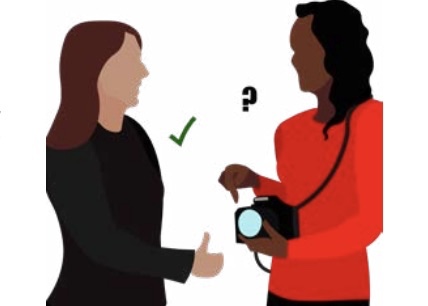Last weekend, Will Schick spent a day with one of the people who sells the Street Sense Media newspaper in Washington, D.C. When that vendor had to step away for a moment, Schick waited with her copies.
“And then someone came up to me and asked me if I was an addict,” said Schick, who, in fact, is Street Sense Media’s editor-in-chief and a Marine Corps veteran.
The man assumed Schick was the newspaper’s vendor, and since that weekly paper covers the homeless crisis and some of the vendors selling it are homeless, Schick must himself be part of that population. The question, about addiction, came next.
“It’s incredible how entrenched that is.”
I know Schick because he was a 2021-2022 Poynter-Koch fellow, a program I run for Poynter, and he has two fellows in our current class. At the end of his fellowship, he pitched an idea that the journalism industry needs — a guide to covering homelessness.
Now, it’s out in its first iteration, and it aims to challenge assumptions (including that everyone experiencing homelessness is an addict), offer guidance on language and help journalists think through how to better cover a story that exists in almost every community.
Since 2016, Street Sense has led a 24-hour collaborative reporting project on homelessness in Washington, D.C. This year, that project is expanding to one week. The guide, also available as a PDF, came out of years of answering questions for local newsrooms and, even more specifically, 30 interviews around the country with journalists, advocates, lawyers, service providers and homeless people.
A lot of journalists haven’t yet covered people who live in extreme poverty, Schick said. He heard from one reporter, for instance, ahead of a story on food stamps. The reporter hoped to find someone using them.
Schick’s response: I hope you’re not planning on asking them what it’s like to use food stamps.
“That would be an awful question,” he said. “That’s like asking somebody ‘what’s it like to be poor?’”
Journalists should start with research and be respectful of their sources’ time, regardless of their financial situation.
“Don’t have them explain to you the very basic stuff.”
With the food stamp story, for instance, what would someone using them do to make the program better? Start there.
Schick envisions the guide as someday becoming a hub for anyone covering homelessness. How do you interpret data? How do you deal with ethical issues? What should you do if a source asks to be paid for their time?
And what about language? Homeless? Unhoused? People experiencing homelessness?
“Not everyone agrees on what the language should be,” he said. He’s heard, “‘What’s wrong with just calling me Bob? What’s this fixation on having to describe me in a specific way? I could care less. My experience is just my experience.’”
AP Stylebook’s guidance is “Homeless is generally acceptable as an adjective to describe people without a fixed residence. Avoid the dehumanizing collective noun the homeless, instead using constructions like homeless people, people without housing or people without homes. Mention that a person is homeless only when relevant.”
Street Sense’s guide cautions: “While these terms can be helpful and sufficient to describe homelessness in general, consider that they are usually insufficient for fully describing a person’s living situation. Homelessness is a spectrum and can assume many forms. For instance, the experience of a person sleeping in a tent on the sidewalk is vastly different than that of someone who couch surfs. We advise journalists to be as specific as possible when reporting on homelessness.”
People-first language is good, Schick said, “people-first reporting is even more important.”
Street Sense’s guide will keep growing, including an interviewing guide and a glossary of terms. It isn’t meant to be prescriptive, Schick said, but instead to get journalists to think with nuance, and humanity, about telling these stories.
“I’ve interviewed a lot of folks who don’t consider themselves homeless but don’t have a place to live,” he said. “People want to be understood for who they are and how they ended up where they are.”
You can see the full guide here.
This piece originally appeared in Local Edition, our newsletter devoted to the telling stories of local journalists







